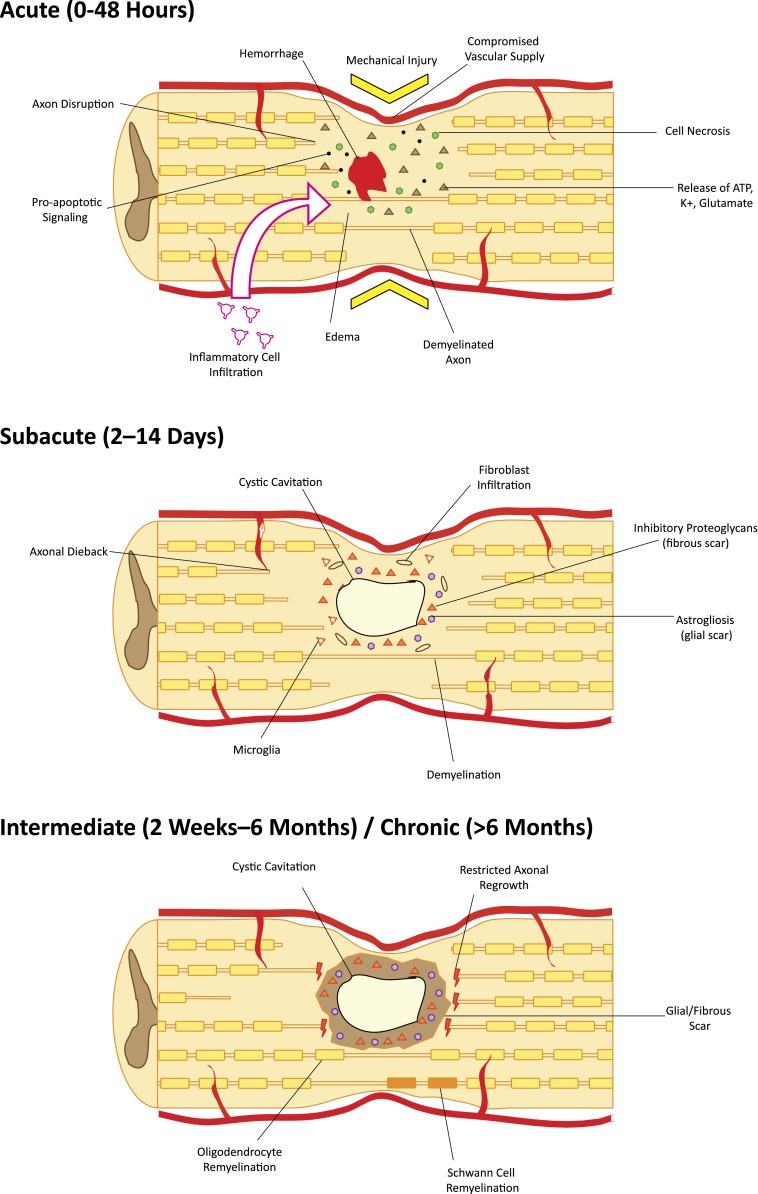Figure 1.
Pathophysiology of spinal cord injury in the acute, subacute, and chronic setting. Acute traumatic injury causes cell death through ischemia, release of cytotoxic molecules, initiation of apoptotic cascades, hemorrhage, edema, and infiltration of inflammatory cells. In the subacute phase, cystic cavities begin to coalesce and become surrounded by reactive astrocytes, fibroblasts, and inflammatory cells. Inhibitory proteoglycans are secreted into the extracellular matrix. Degeneration/dieback of damaged and denuded axons occurs. In the intermediate/chronic phase, encompassing most patients, mechanical and chemotactic barriers restrict axon regeneration. Limited remyelination by oligodendrocytes and Schwann cells may portend small functional gains during this period.

